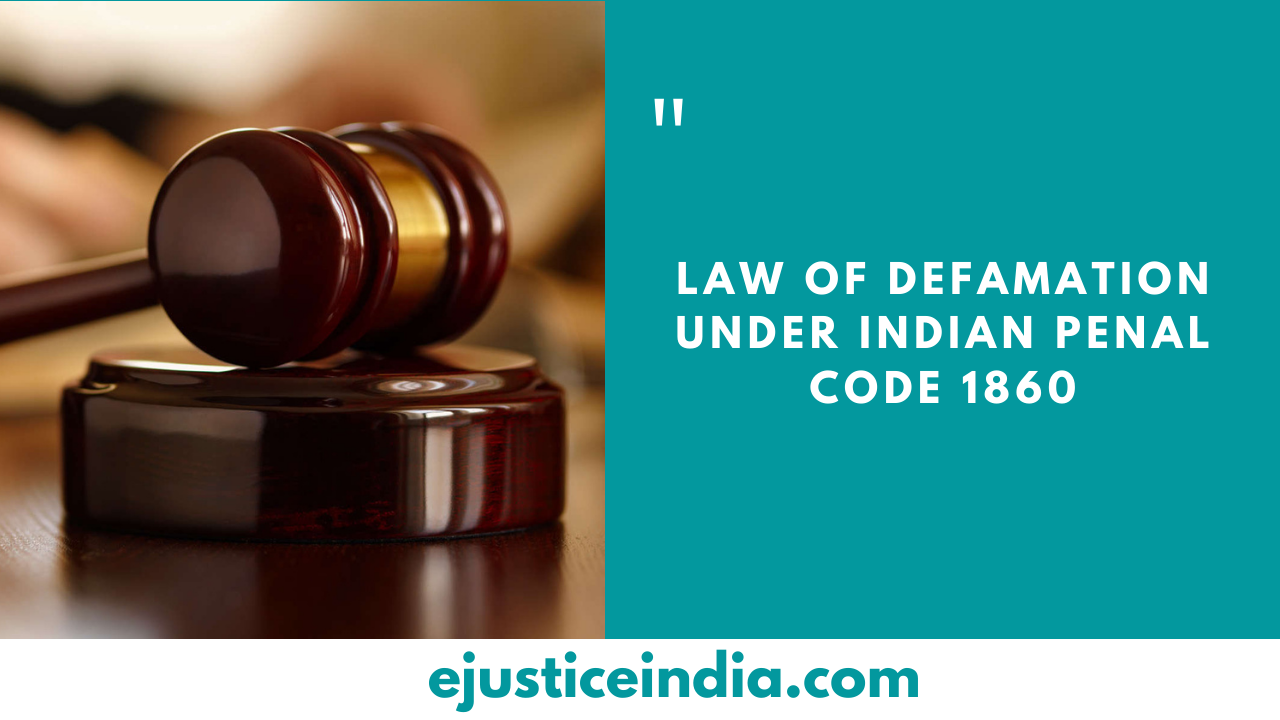IS IPC GENDER BIASED?
Author: Vidhi Shah (Mumbai University)
Abstract
Gender inequality is one of the world’s foremost most visible instances of inequality. Gender inequality in India refers to health, employment, social, and political disparities between males and females in India. The author of this article attempts to research the gender-specific loopholes in India’s Women Protection Laws, which penalise only the male gender and which doesn’t provide any right part to males in the context of the same atrocities committed against them. The author observes prevailing protective legislation in India in light of gender neutral laws, and then certainly suggests improvements that can be made to ensure that all genders are protected appropriately under the law, rather than protecting one class at the price of the other.
Introduction
The Indian Penal Code 1860 (IPC) has sparingly been amended since its enactment. It applies to the entire of India except the state of Jammu and Kashmir. The IPC originally had twenty-three chapters. Three more chapters have been added to it. Placement and the punishment of the offence the nature and the seriousness of the offence indicate the legislative perceptions. Classifications of the serious offences are as cognizable and non-bailable and non-cognizable and bailable by the Criminal Procedure Code 1973 (CrPC). When presented in the same manner, the IPC seems essential and inherently gender-neutral.
Analysis of the Indian Penal Code Provisions
Before analysing, it is important to know the distinction in the usage of ‘he’ by the IPC in contrast with, ‘man’ and ‘woman’. The general explanations in the IPC mention that the pronoun ‘he’ and its derivatives are used for any person whether male or female.[i]
The word ‘man’ denotes a male person being of any age and woman’ denotes a female person being of any age.[ii] Usage of ‘he’ or ‘man’ in a section, therefore, determines whether it applies to both the males and females or it applies to either males or females.
The Oxford Dictionary describes ‘Gender Neutrality’ as an adjective that is suitable for both male and female genders. It describes the thought that policies, language, and other social institutions should avoid distinguishing roles consistent with people’s sex or gender, and emphasizes on the equal treatment of men and women legally with no discrimination[iii]. We envision a sort of society where equality are going to be established in its true sense, and established not at the cost of any gender!
The Indian Penal Code, in its basic form, is that the main criminal code of India, which lists all the cases and punishments that a person committing any crimes is liable to be charged with, and covers any Indian citizen or a person of Indian origin.
Any Indian citizen or individual of Indian origin is liable to be charged with. Every individual shall be liable to punishments under this Code and not otherwise for every act or omission contrary to the provisions thereof, of which he shall be guilty within India, according to Section 2 of the Indian Penal Code.
As stated in this section, the law does not distinguish between criminals, and every person who has committed an offence is liable to punishments under the said code. However, the assumed mind-set says, ‘all violence is male generated’, does not only create a gender divide in the society but provides a shield to the crimes committed by women.
‘Crime has no gender, and neither should our laws have’
Some sections which favour only women where gender biasedness is seen:
Section 354 of the Indian Penal Code this section deals with assaults and criminal force with intent to outrage a women’s modesty. The punishment for the offence lies with imprisonment up to three years, or with fine, or both.
Section 509 of the Indian Penal Code states any intentional words, gestures or acts to insult the modesty of women makes the offender punishable with imprisonment which may extend to one year, or with the fine, or with both.
Section 304B of the Indian Penal Code deals with dowry death, according to the section if the death of the woman is within seven years of her marriage and is caused by burns or bodily injury, or any other abnormal circumstances, provided the woman has been subjected to harassment by her husband and in-laws, for or in connection with demand of dowry. The punishment for this offence lies with imprisonment for a term not less than seven years, but which may extend to imprisonment for life.
Section 498A of the Indian Penal Code read with Section 113A of the Indian Evidence Act limits its scope on cruelty and harassment inflicted upon a married woman by her husband or any relatives of the husband. The offender shall be punished with imprisonment which may extend to three years, and with fine.
Section 375 of the Indian Penal Code (Rape)
As per this section, it is mandatory for a man to officially rape, and a woman to officially get raped. According to this section, all rapists are men as this section favours only women. This section does not accept male as a victim of sexual offences. Also in Section 377 of the Indian Penal Code when a male victim is assaulted by a male attacker it is not regarded as rape.
Crimes like rape and murder do not see age, caste, racism, nationality and even gender or sexual inclination. Rape is seen across the extremes of age, sex and geographical boundaries.
Some other aspects:
A man having consensual sex with a woman. There’s a no way to prove a woman’s will. A woman may have consensual sex and can still accuse the man with rape.
A man cannot break up with a woman after promising marriage and has sex after it. According to Indian laws if he does that he will be a rapist. If same done by a woman she will be guarded with the shield of ‘woman empowerment’.
There’s no age of consent for males. If a teenage boy and girl indulge in consensual sex then the boy will be charged with rape.
Section 497 of the Indian Penal Code (Adultery)
This section specifies any person has sexual intercourse with a person who is or has reasons to believe to be the wife of another man, irrespective of the consent such sexual intercourse does not amount to rape nut include under adultery for whom the punishment varies which may extend to five years, or with fine, or with both. In such a case, the wife shall be punished as an abettor.
Highlights of some points:
Adultery are often committed by a man and not by a woman. If a man has sexual intercourse with a married woman and does not have the consent of the husband of the woman, such a husband can prosecute the man for adultery.
After the outrage seen in the Nirbhaya rape case, few senior lawyers introduced the bill before the Rajya Sabha to make amendments in the criminal laws and to make the sexual offences gender-neutral.
The bill includes the proposed amendment in the acts like Indian Penal Code, Criminal Procedure Code and the Indian Evidence Act to ensure the words ‘man’ and ‘woman’ to be replaced with ‘any person’.
The issue was raised last year through a PIL in the Supreme Court. The Gender Neutrality in Indian rape laws was contended in Sudesh Jhaku v. K. C. Jhaku[iv] where it was decided that the sexually assaulted males will be same protection as of were given to females victims.
The 172nd Law Commission’s report recommended making rape laws unbiased and gender-neutral in Criminal Law Amendment Bill, 2012. But before this bill could come in force the nation faced the incident of Nirbhaya Rape Case. There are no further updates about the bill.
The Criminal Law Amendment Act of 2013
After the Nirbhaya Rape Case, the rape laws have faced significant changes in the Indian Penal Code. The amendment introduced is seen to be gender-neutral which introduces provisions for acid attacks, sexual harassment, stalking and disobeying a woman.[v] The definition of rape has also broadened which now not only include penile-vaginal penetration but oral, anal, and insertion of any objects into the vagina or anus of a woman. The punishment for rape has also enhanced.[vi]
Human Rights and Gender Neutrality
Right to equal protection of law and right to life and personal liberty are some of the basics human rights guaranteed to every human being irrespective of their gender. In case of Bodhisattwa v. Shubhra Chakraborty[vii] and Narender Kumar v. State (NCT of India)[viii], the Supreme Court of India accepted the contention that rape violates the basic human rights namely, right to life and personal liberty contained in the Constitution of India. The traditional rape laws favour only women and hence violates the rights of the men.
If the laws are not Gender Neutral, the perpetrator can file a counter case against the victim in order to mislead the law: this comes after a many cases go unreported due to the societal notion which never adopts that a man can be harassed by another man.
Conclusion
The traditional patriarchal nature of the Indian society shouldn’t be a ground of restricting to bring the gender neutrality in laws. We could understand that in the Indian Penal Code there are many sections where we can see the gender biasedness although many activists and senior lawyers have filed PIL and also various amendments taking place. All this will take the time it won’t happen overnight. But Indian laws are trying to adapt and modernise our laws with us.
Legislations in India not only removes the discrimination against women but also empowers women. The Constitution favours the discriminatory laws which favour women. The Supreme Court takes initiatives in some cases while directing the same to Government. But only making law and amendments is not much necessary but the implementation of the same is necessary to remove the discrimination and implement gender neutrality. Our job includes not to work out the ‘how’. Show up the commitment and belief in what. Accepting the fact that the men also face the crime and only women may not be victim always! This mindset needs to be developed. The education we provide to the next generation should be based on equality and not on differences. Laws should not be based on the presumption that particular gender may be a victim and the particular may be a perpetrator. Strong legislations also be laid against false complainants causing innocents to be an offender. We need to realize that crime has no gender, and every person committing it must be discouraged.
“Justice consists not in being neutral between right and wrong, but in finding out the right and upholding it, wherever found against the wrong”
To conclude all this in the words of Phil Rumney:
“Gender-neutral reforms are not designed to make gender irrelevant in our understanding of sexual violence; in fact, gender is central to any understanding of how and why sexual violence occurs. What is clear, however, is that while females are the main victims of sexual violence and males the main perpetrators, one still has to consider how sexual assaults beyond the male-on-female paradigm are to be labelled by the criminal law.”[ix]
[i] Reference Section 8 IPC
[ii] Reference Section 10 IPC
[iii] Gender Neutrality Oxford Dictionary
[iv] Smt. Sudesh Jhaku vs K.C.J. And Others, 1998 CriLJ 2428 on 23 May, 1996.
[v] The Criminal Law Amendment Act , Section 354 (2013)
[vi] The Criminal Law Amendment Act , Section 376 (2013)
[vii] Shri Bodhisattwa Gautam vs Miss Subhra Chakraborty 1996 AIR 922, 1996 SCC (1) 490 on 15 December, 1995.
[viii] Narender Kumar vs State(N.C.T.Of Delhi) 4 SCC 375 on 25 May, 2012.
[ix] quoting American Law Institute, The Model Penal Code and Commentaries: (Official Draft and Revised Comments) (Philadelphia: American Law Institute, 1980) at 337 Google Scholar (art 213, s 213.1, cmt 6)).


